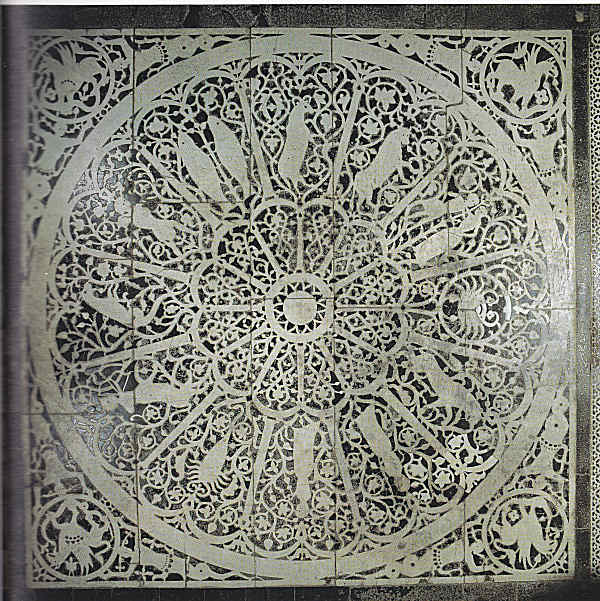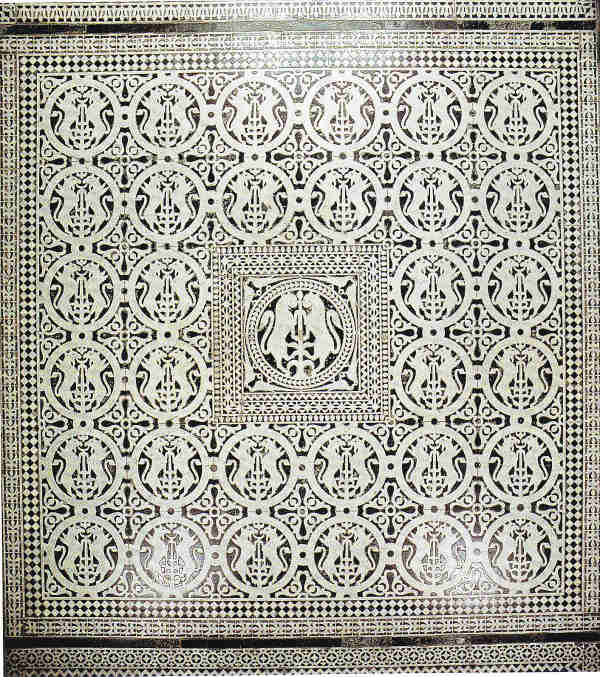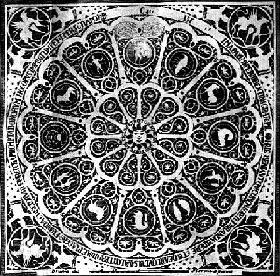Pierre, excuse me if I continue my musing on Yohann’s suggestion about FIG 10: Fra Angelico, detail from Virgin and Child.
Fra Angelico started the painting in his monastery in Fiesole, on the homonymous hill overlooking Florence. I couldn’t find any mention of zodiac floors in Fiesole. The work was then finished in Florence.
We do have in Florence inlaid marble floors (or
opus sectile) with geometric and zoomorphic motifs. There are also two zodiac floors, both made by the same artists in the 13th century, one in S. Miniato al Monte. Here you can see the zodiac floor of the Romanesque basilica of San Miniato al Monte:

and another section of the floor in the same church. Both in white and green marble:
 scans from the book “La pittura di pietra” (Painting in stone) by Ferdinando Rossi
scans from the book “La pittura di pietra” (Painting in stone) by Ferdinando Rossi
And here is the other zodiac, form Florence Baptistery, quite similar, a bit more refined, and the only comprehensive Image I found:

As for something vaguely similar to the inlaid tile technique, it didn’t appear in Florence until 1548 into the Laurentian Library, according to the book above.
Now, back to Fra Angelico’s “carpet”.
Every art historian I found mentioned that thing as a carpet.
However, Yohann is right, it doesn’t look as a carpet.
If that was an inlaid floor, the memory of it had disappeared.
My explanation is that the good friar made it up. As an architectural element. It wouldn’t certainly be the first time that a Renaissance painter put some invented architecture in his paintings.
Fra Angelico was also an illuminator. I bet he took inspiration for his “floor” by some medieval zodiacal illuminations.
Regards,
Filiberto